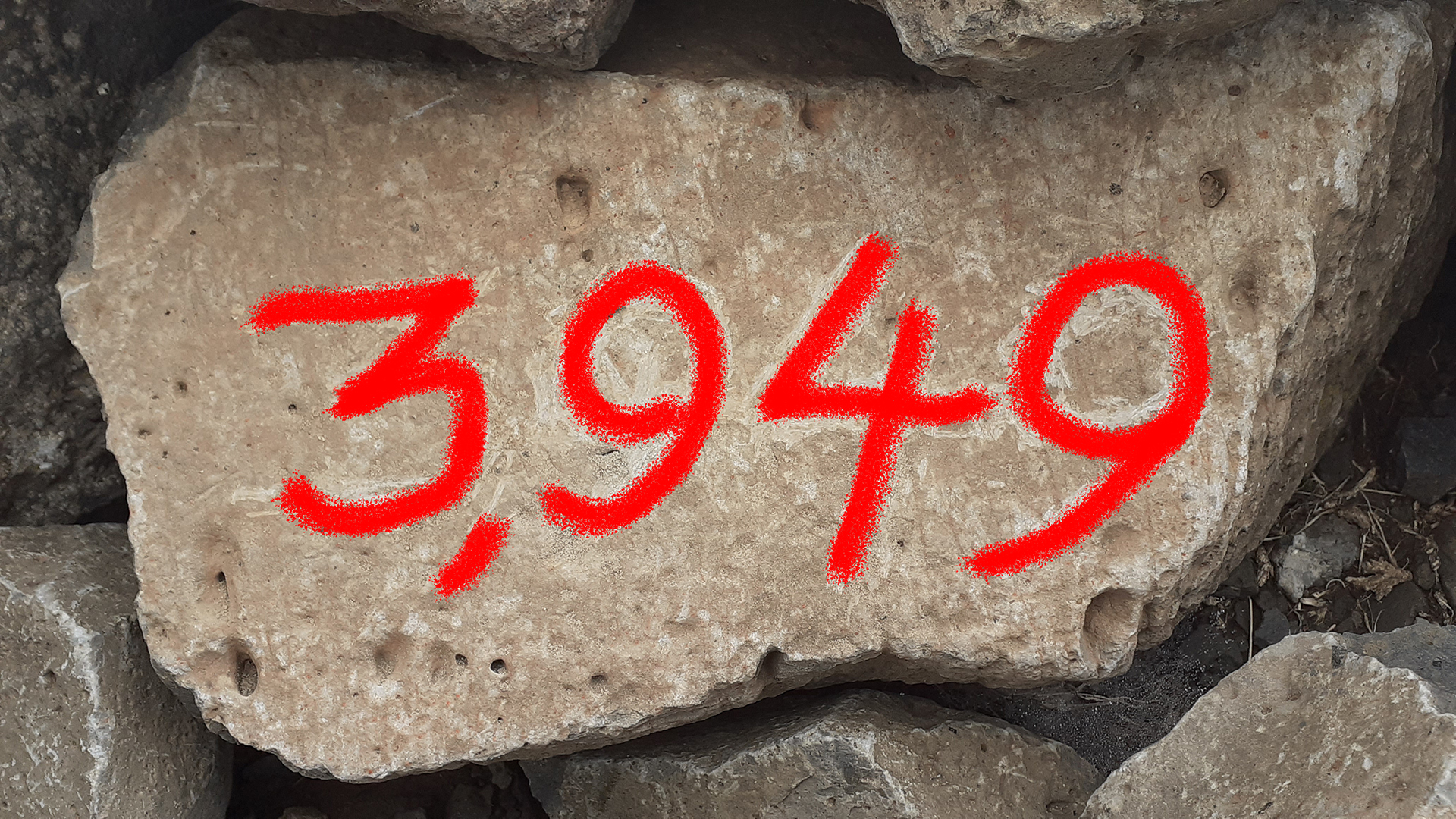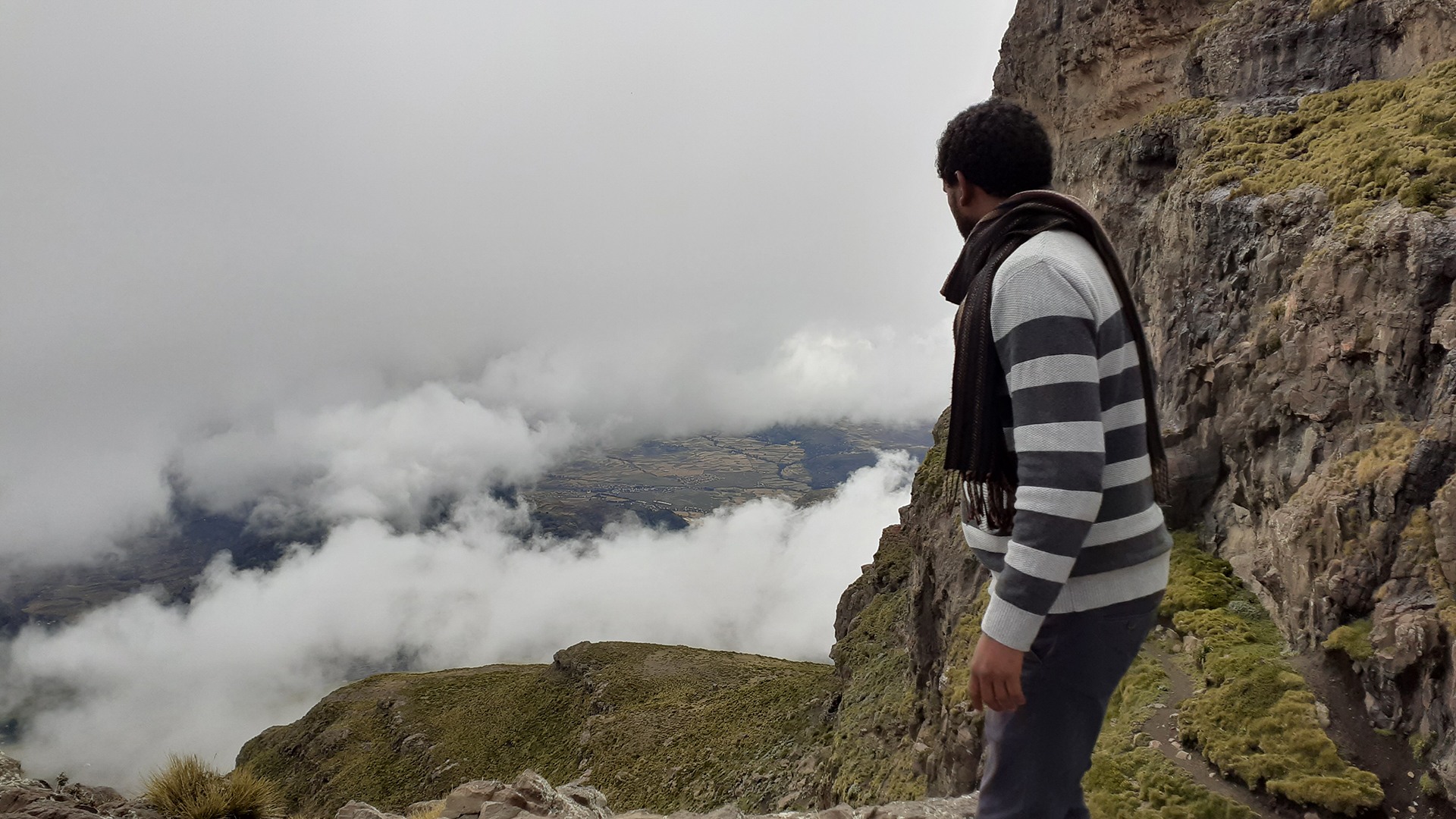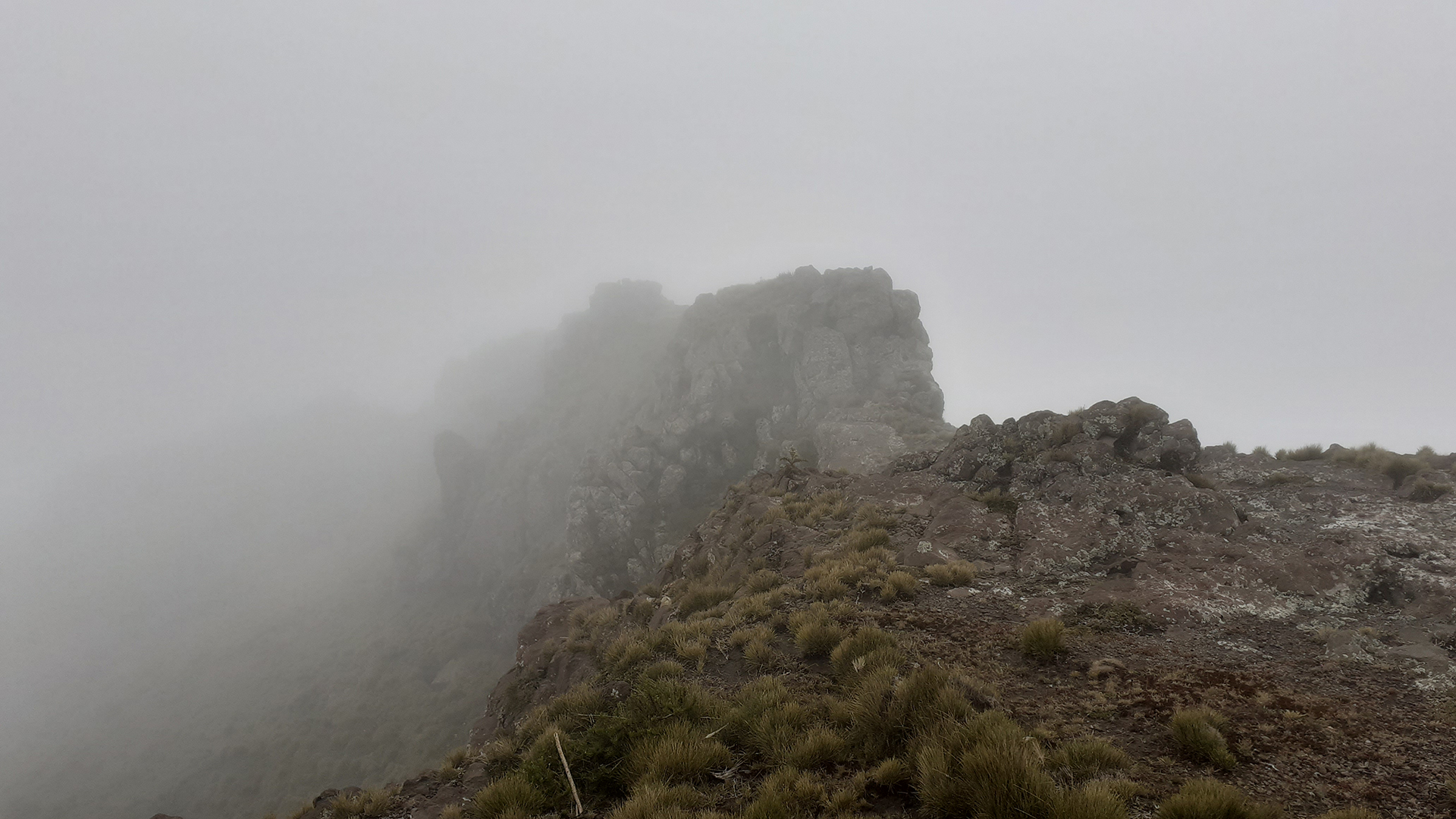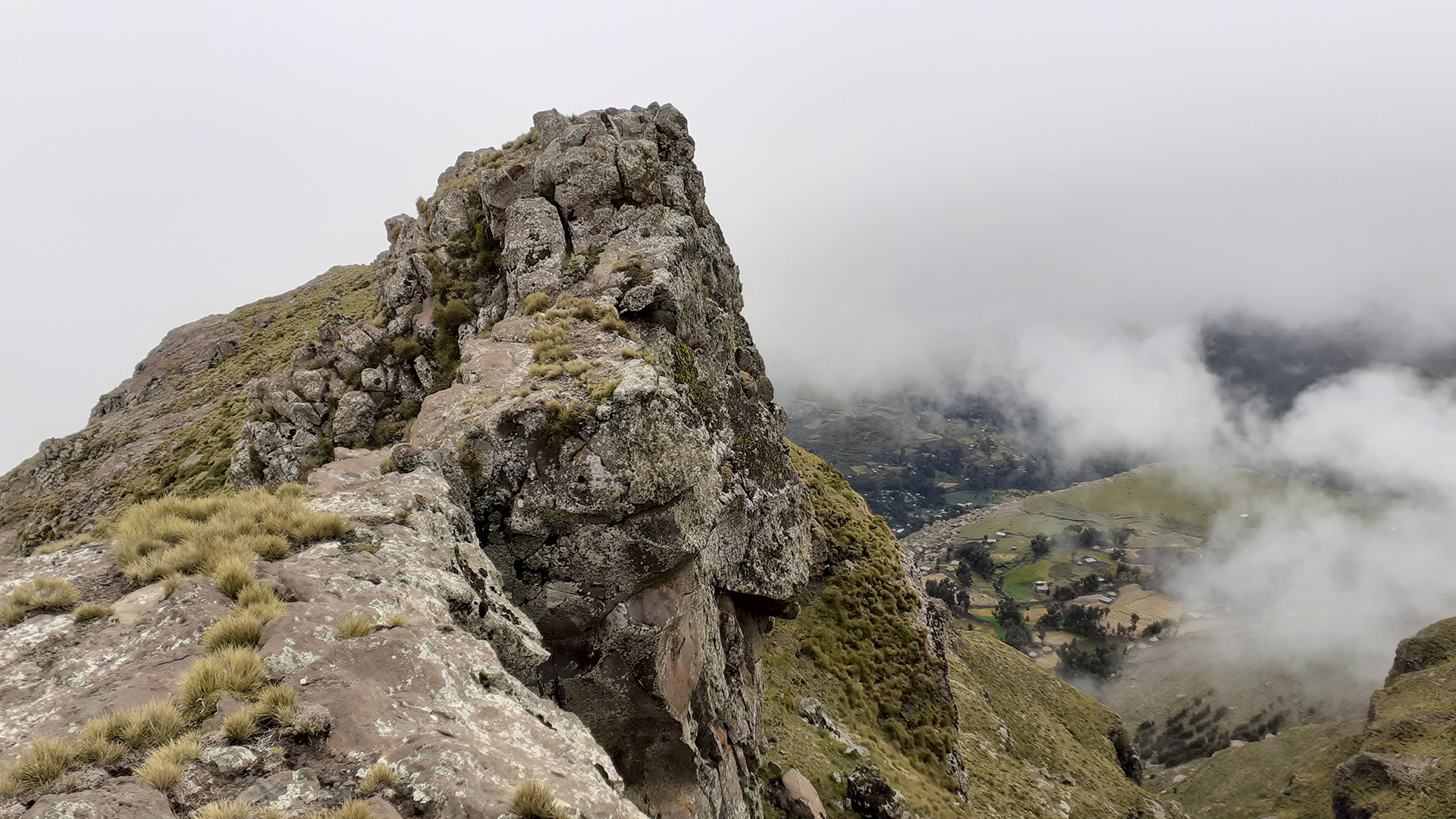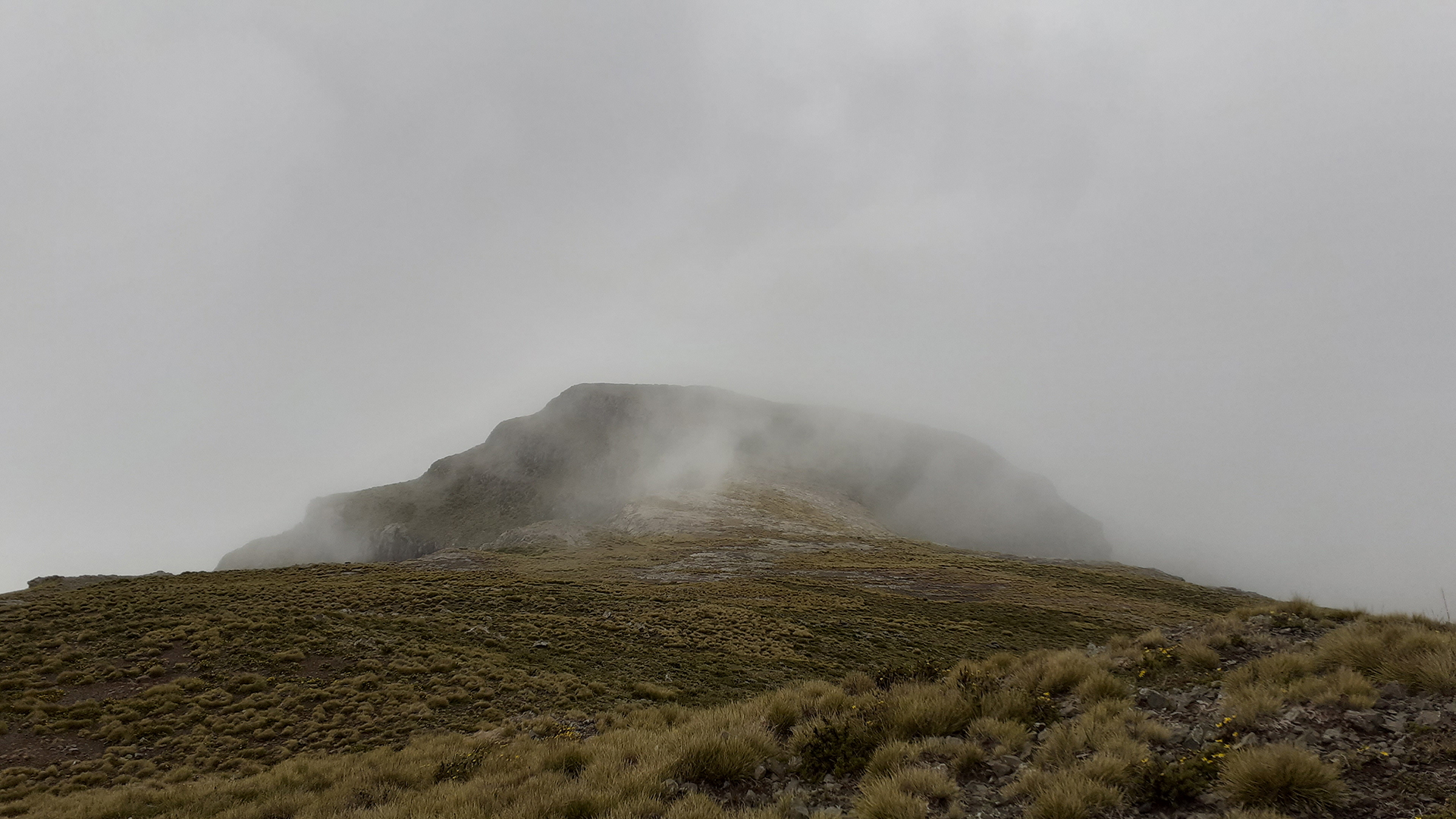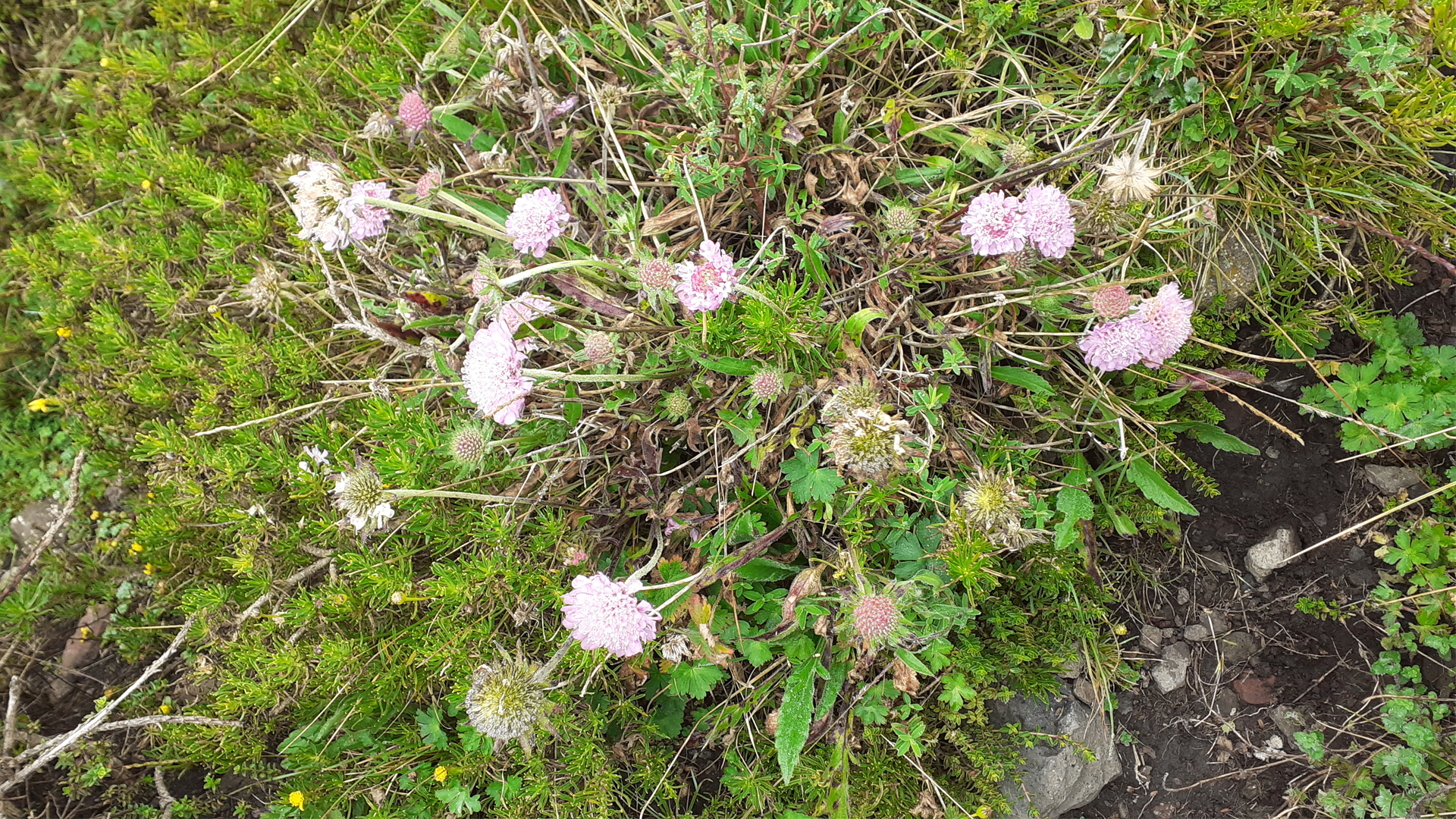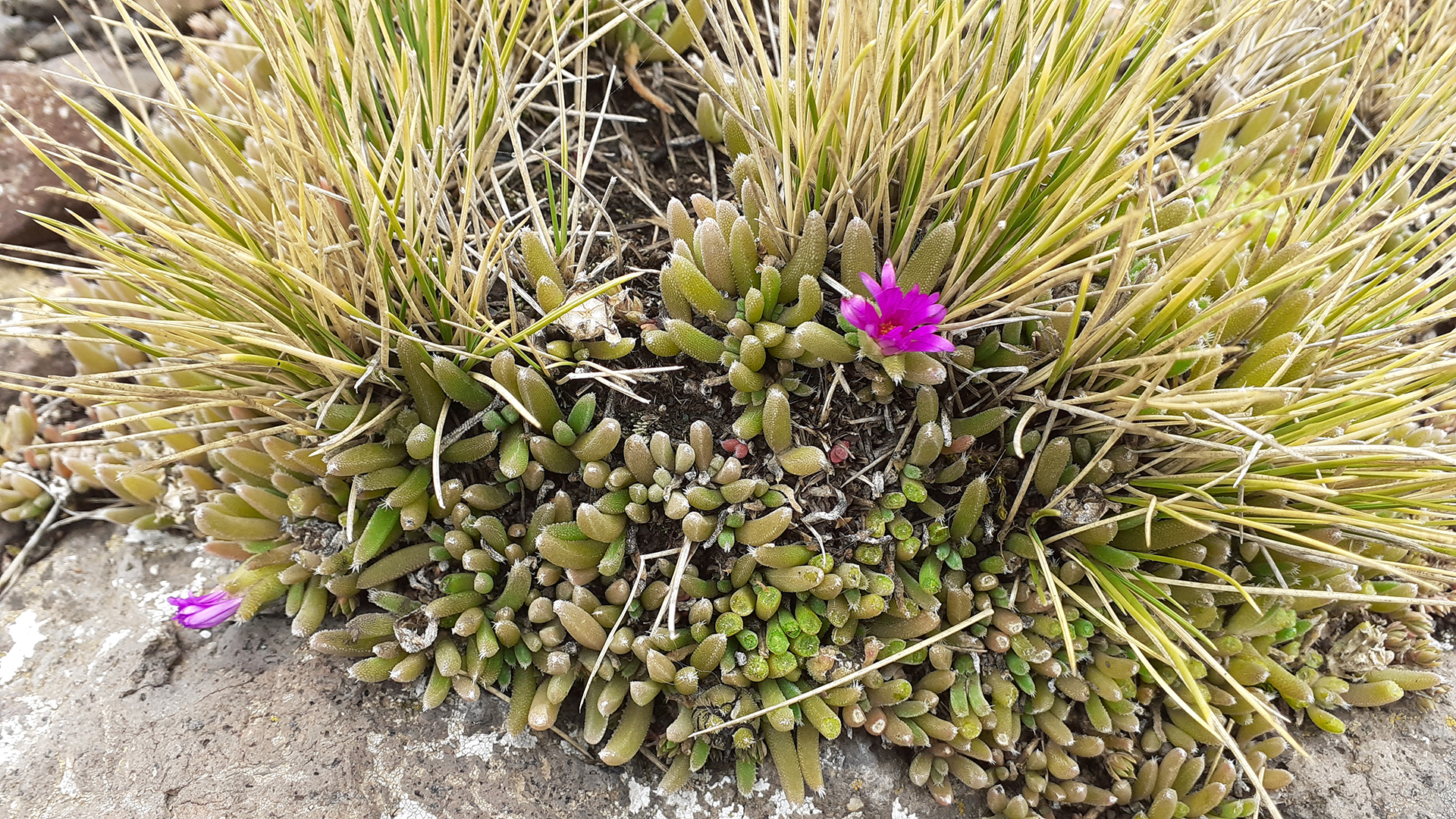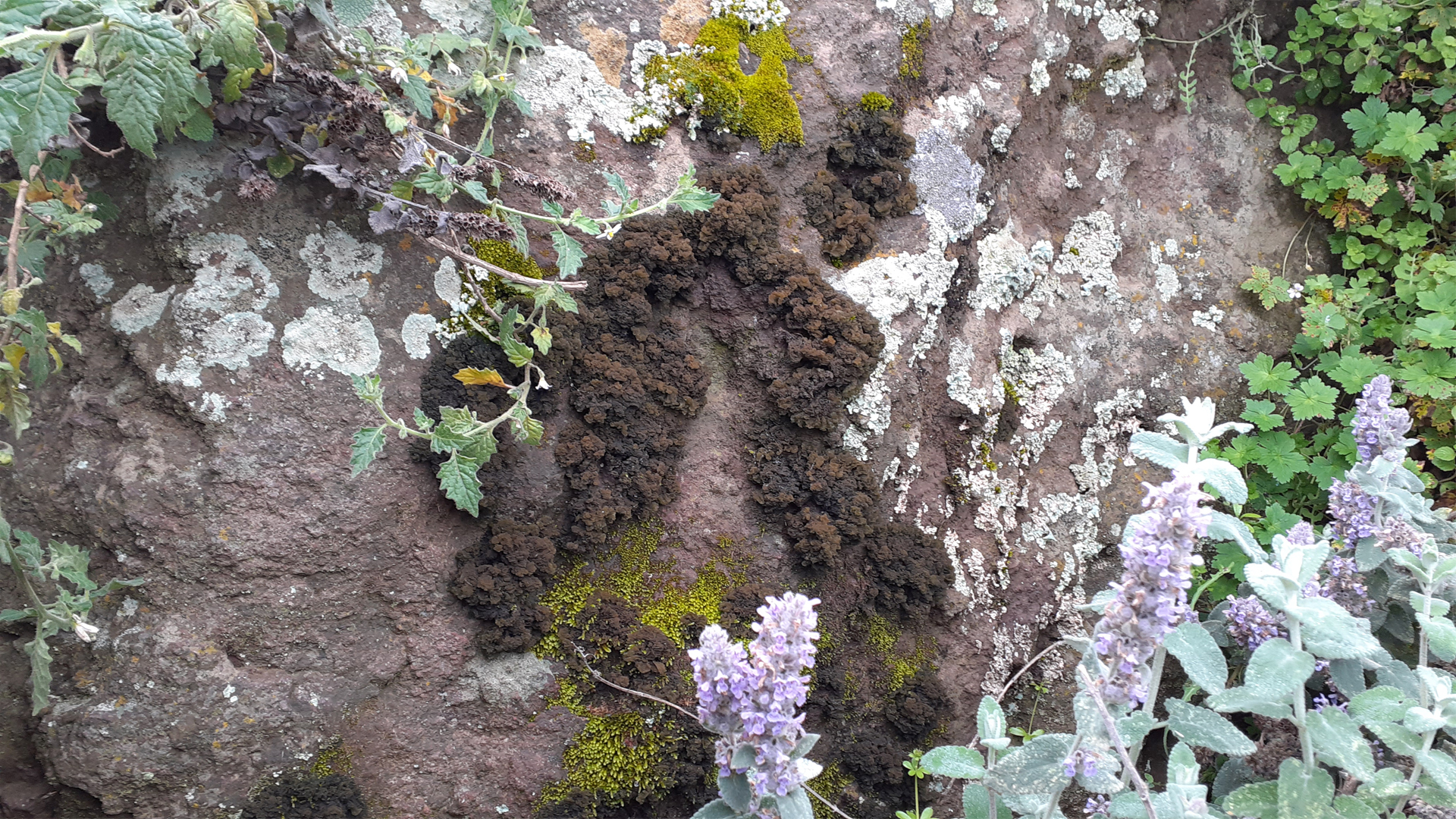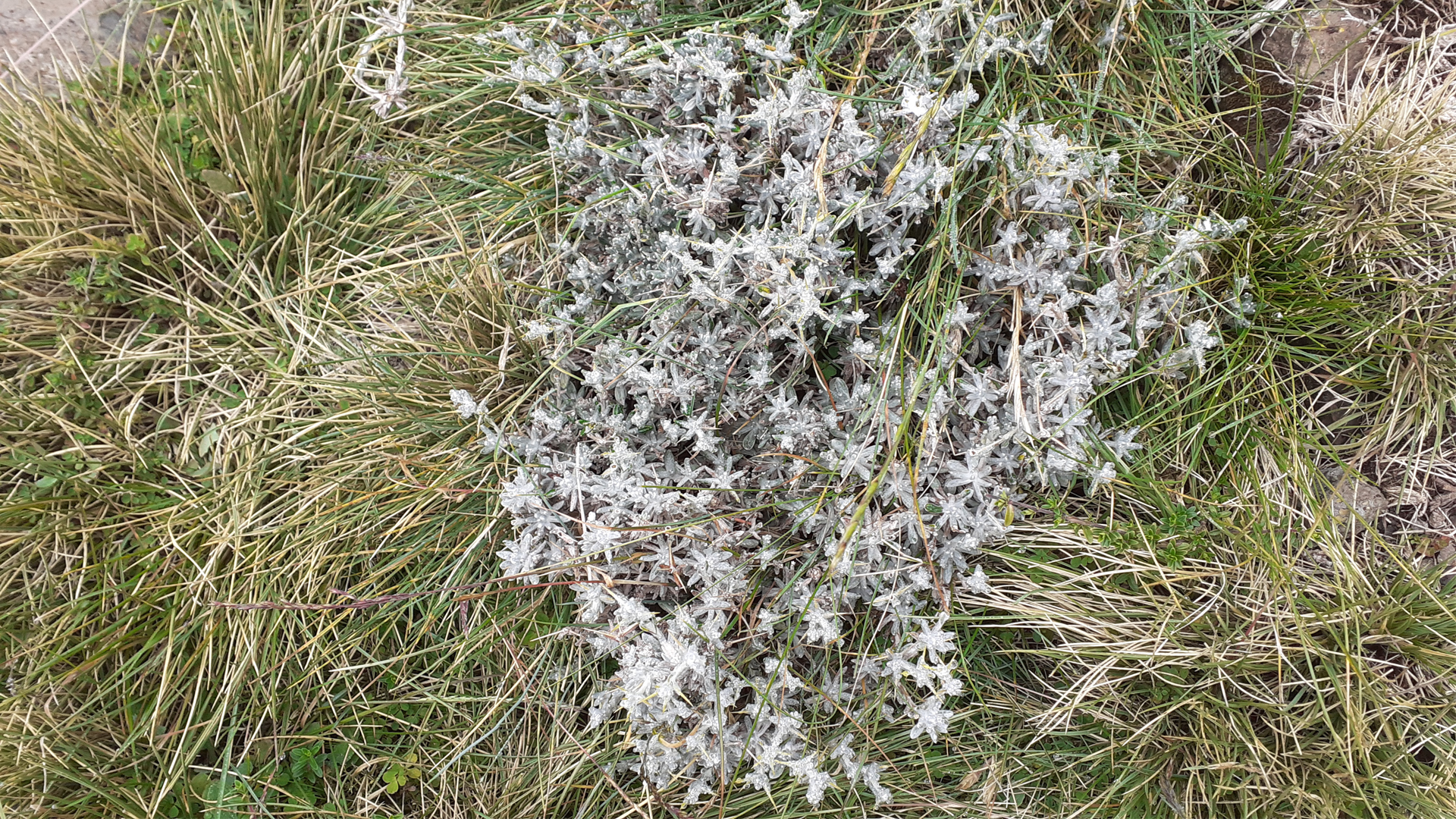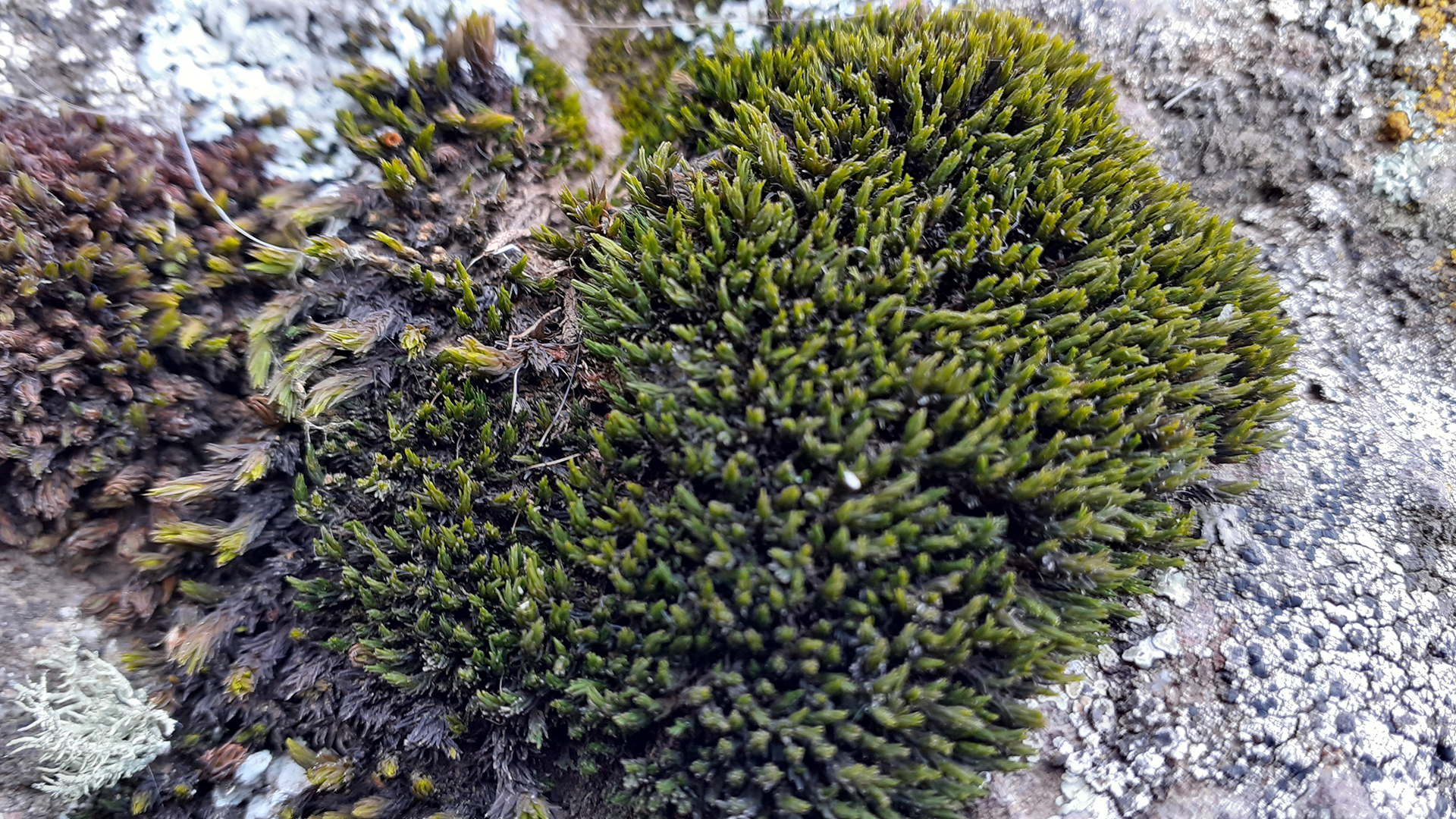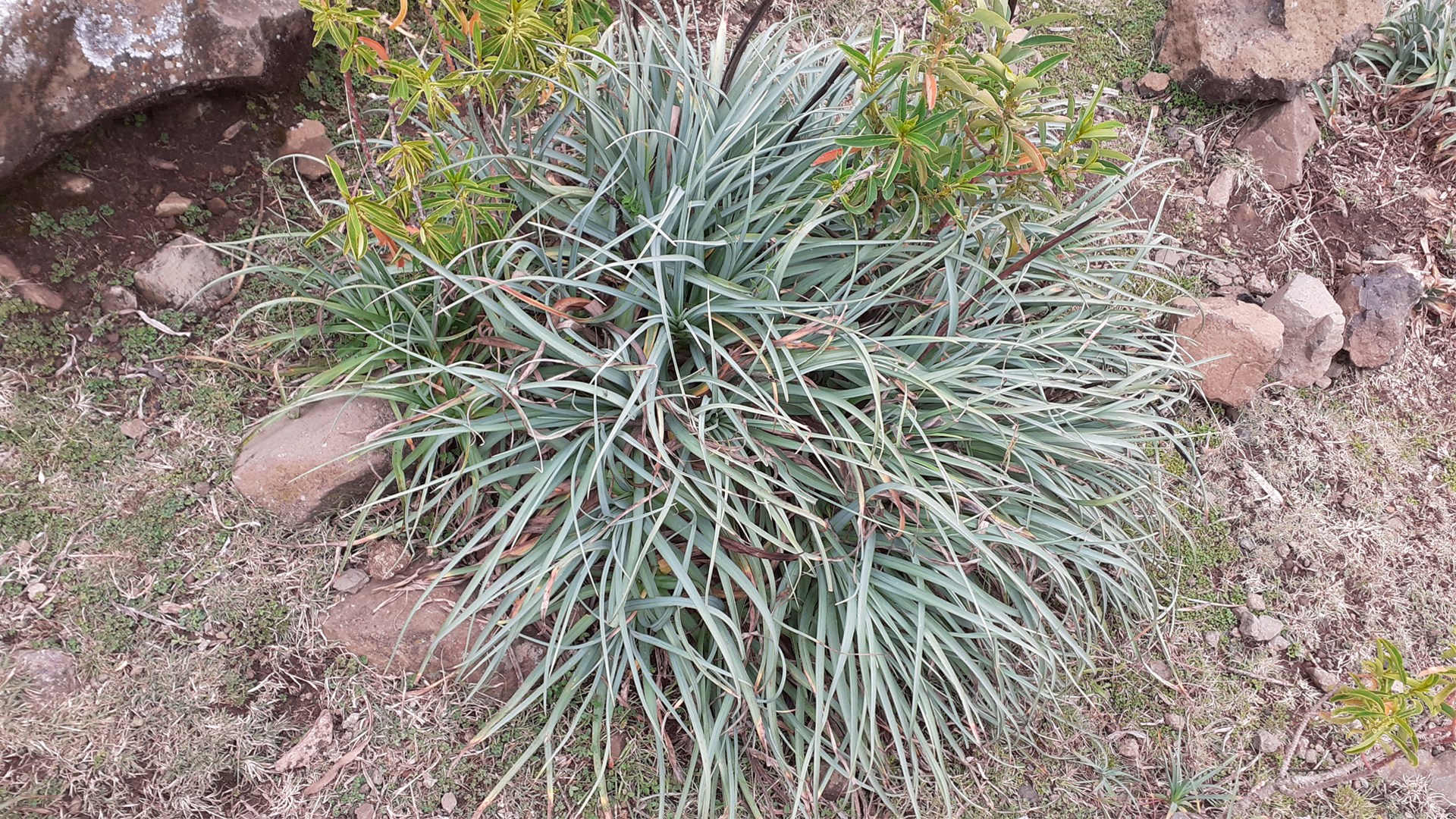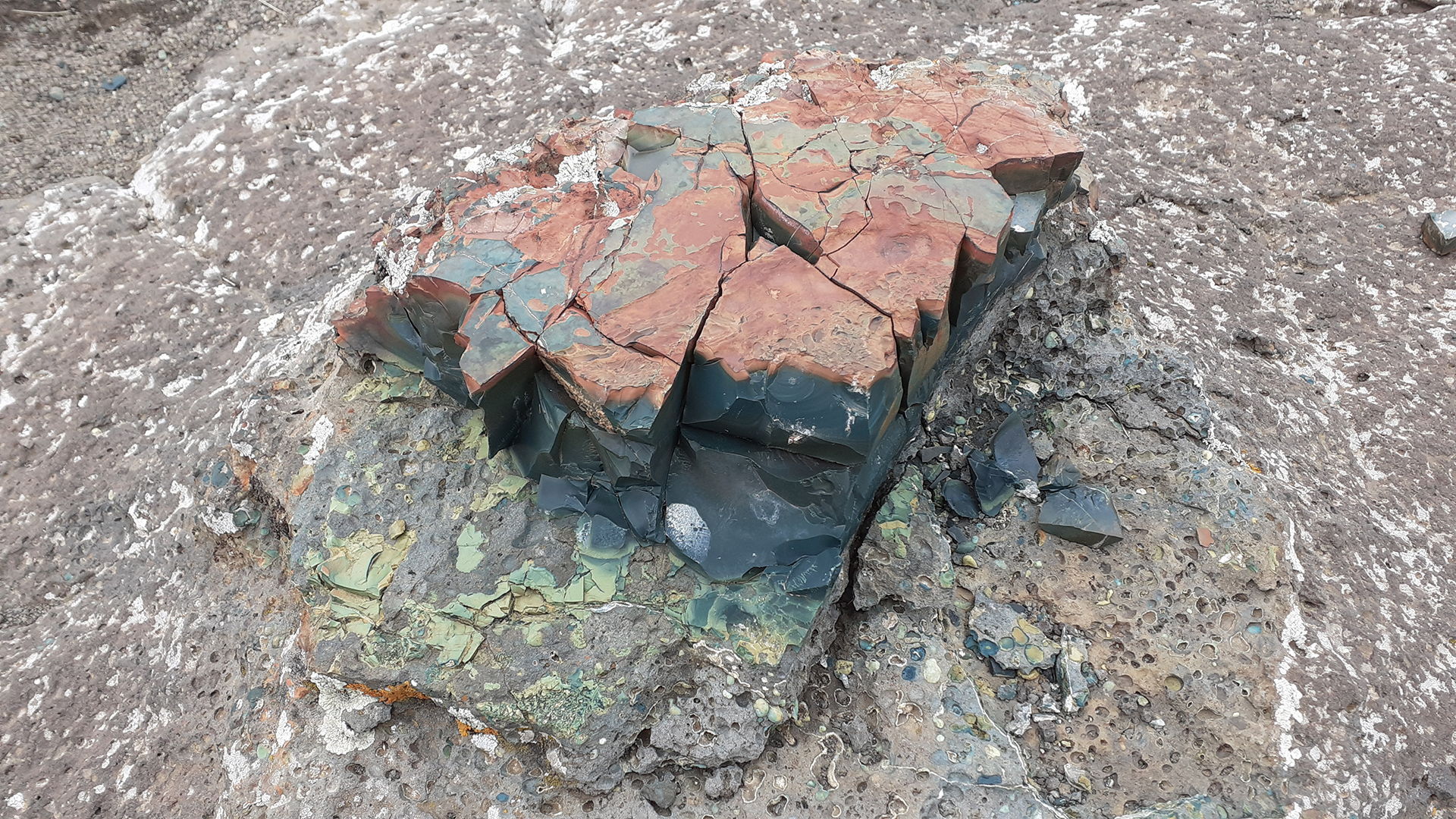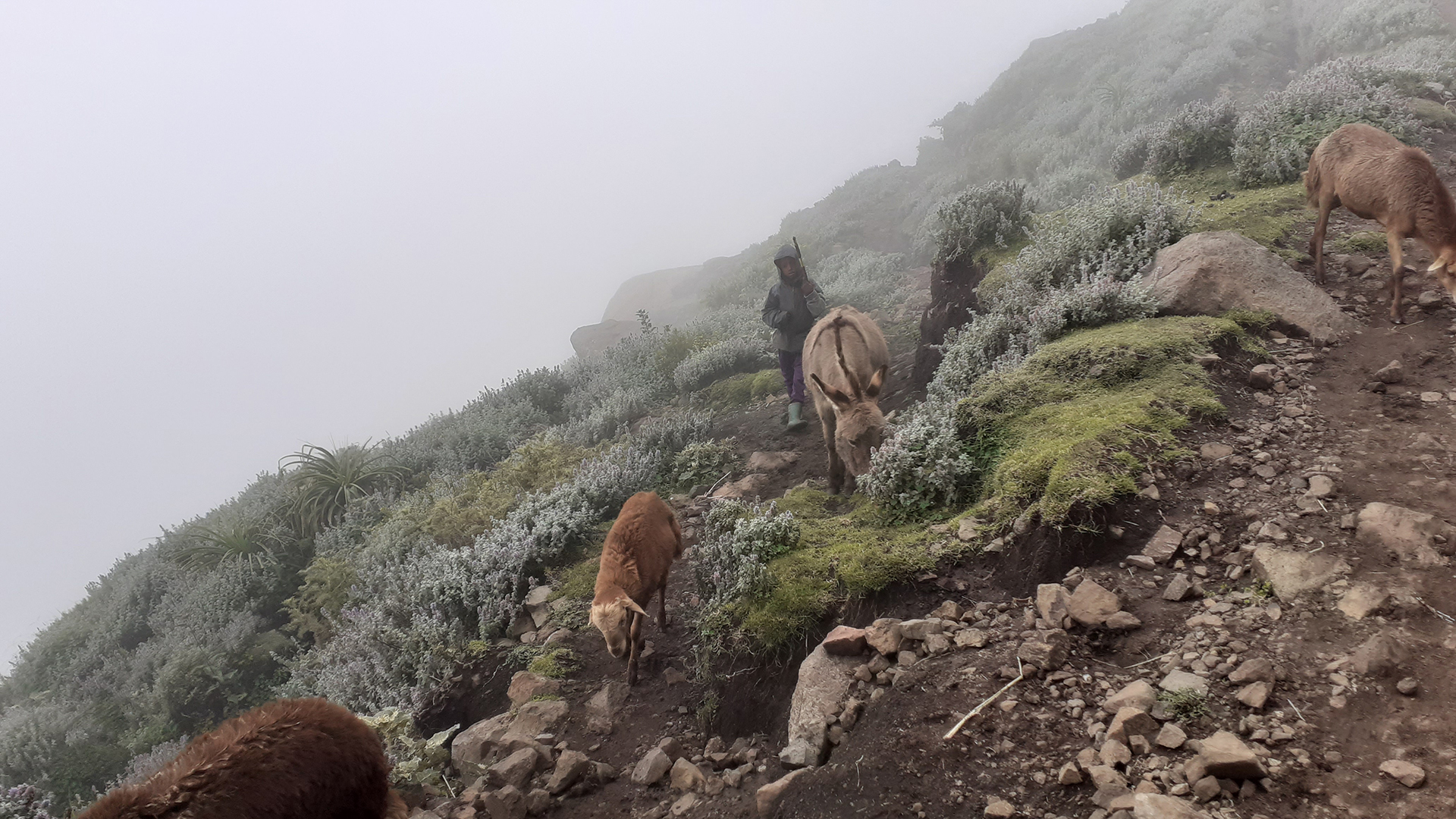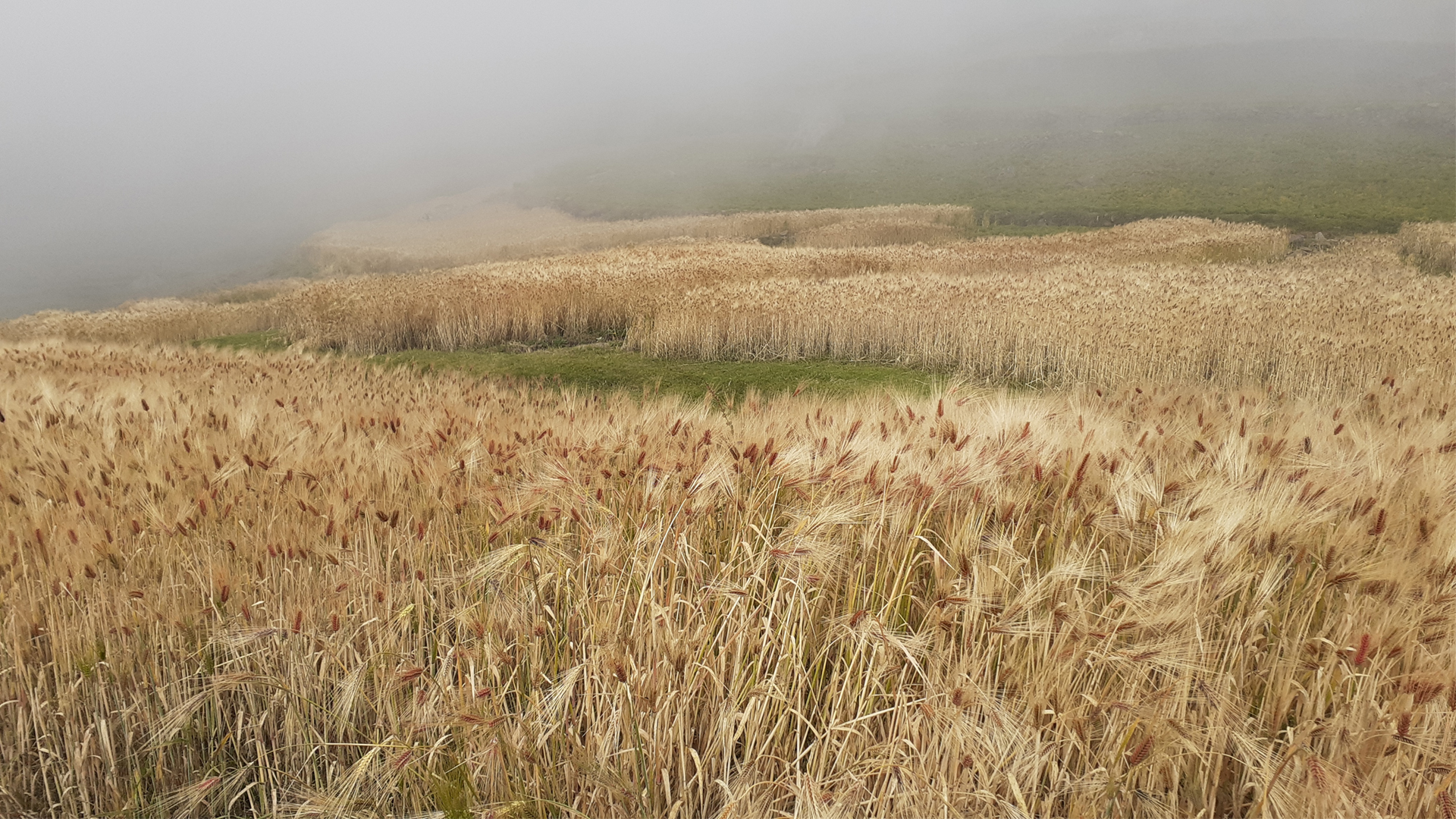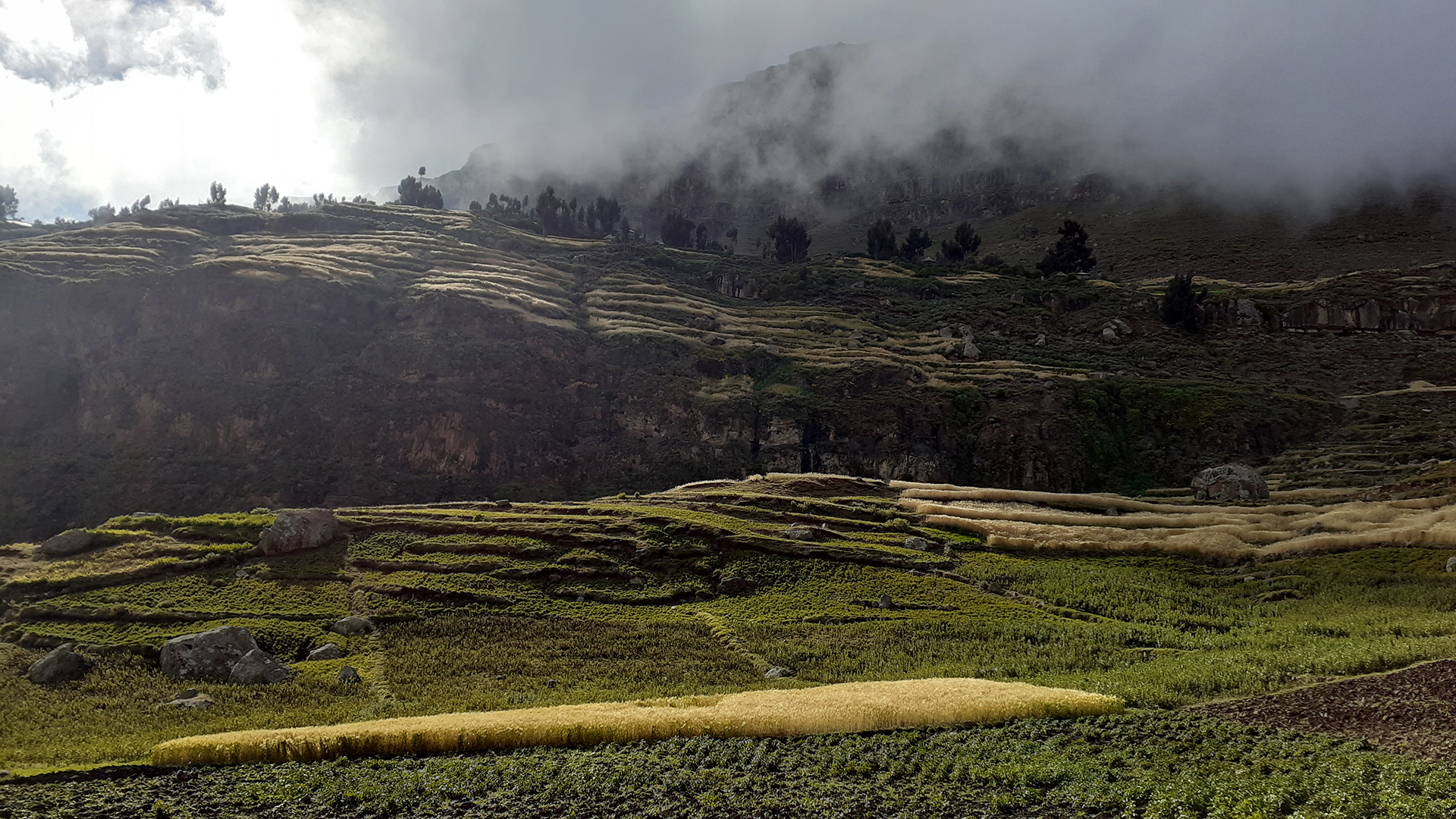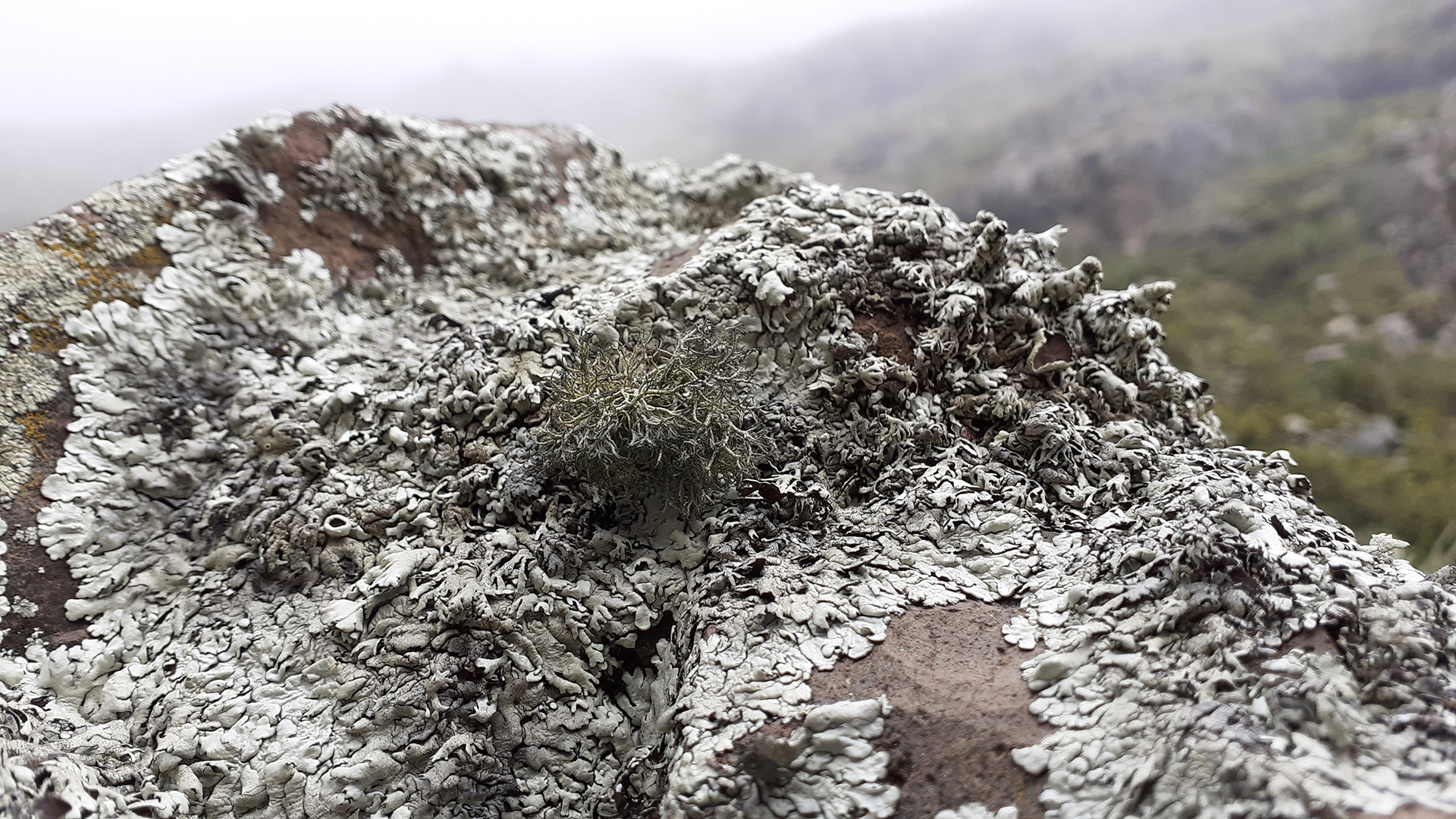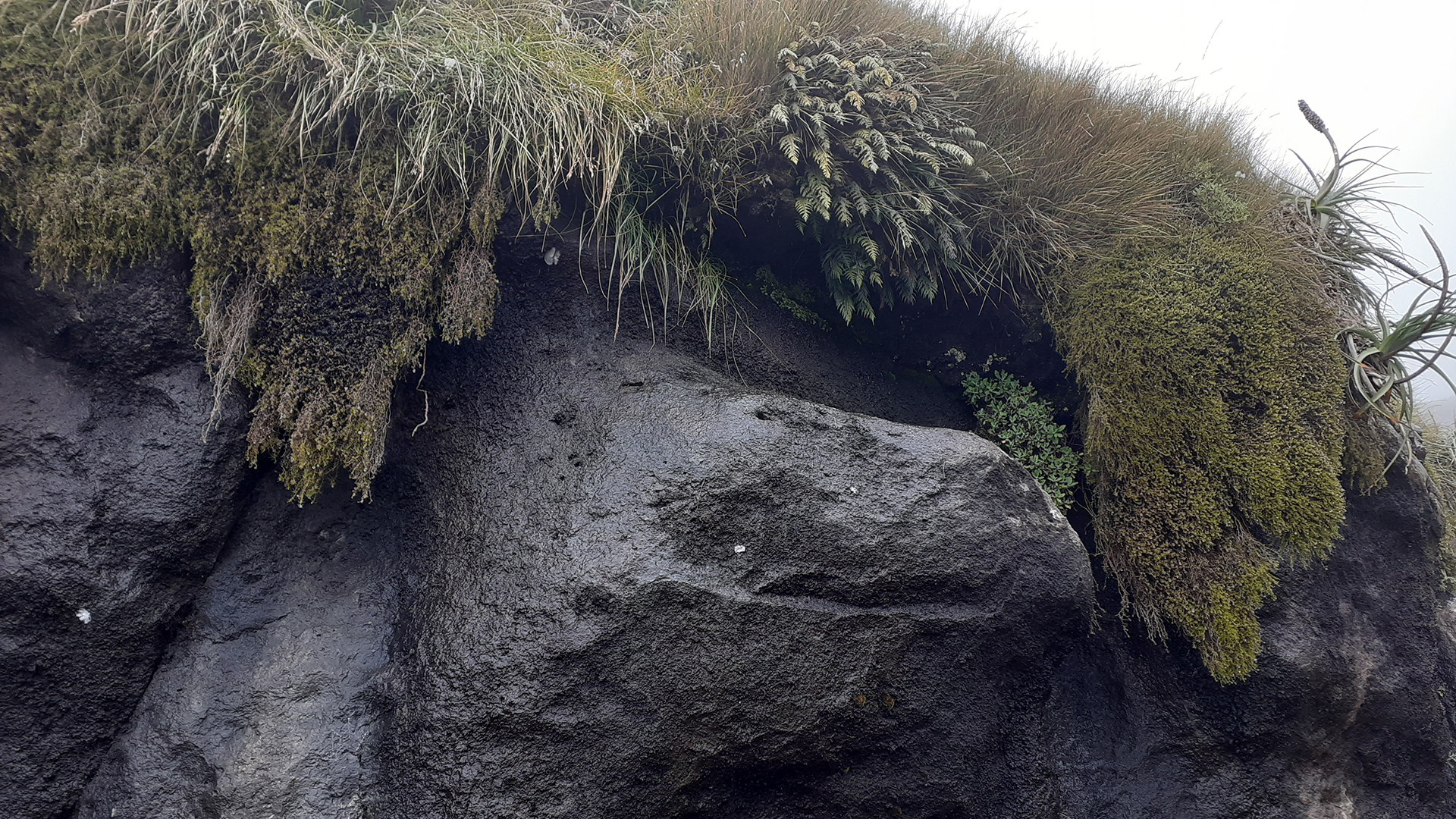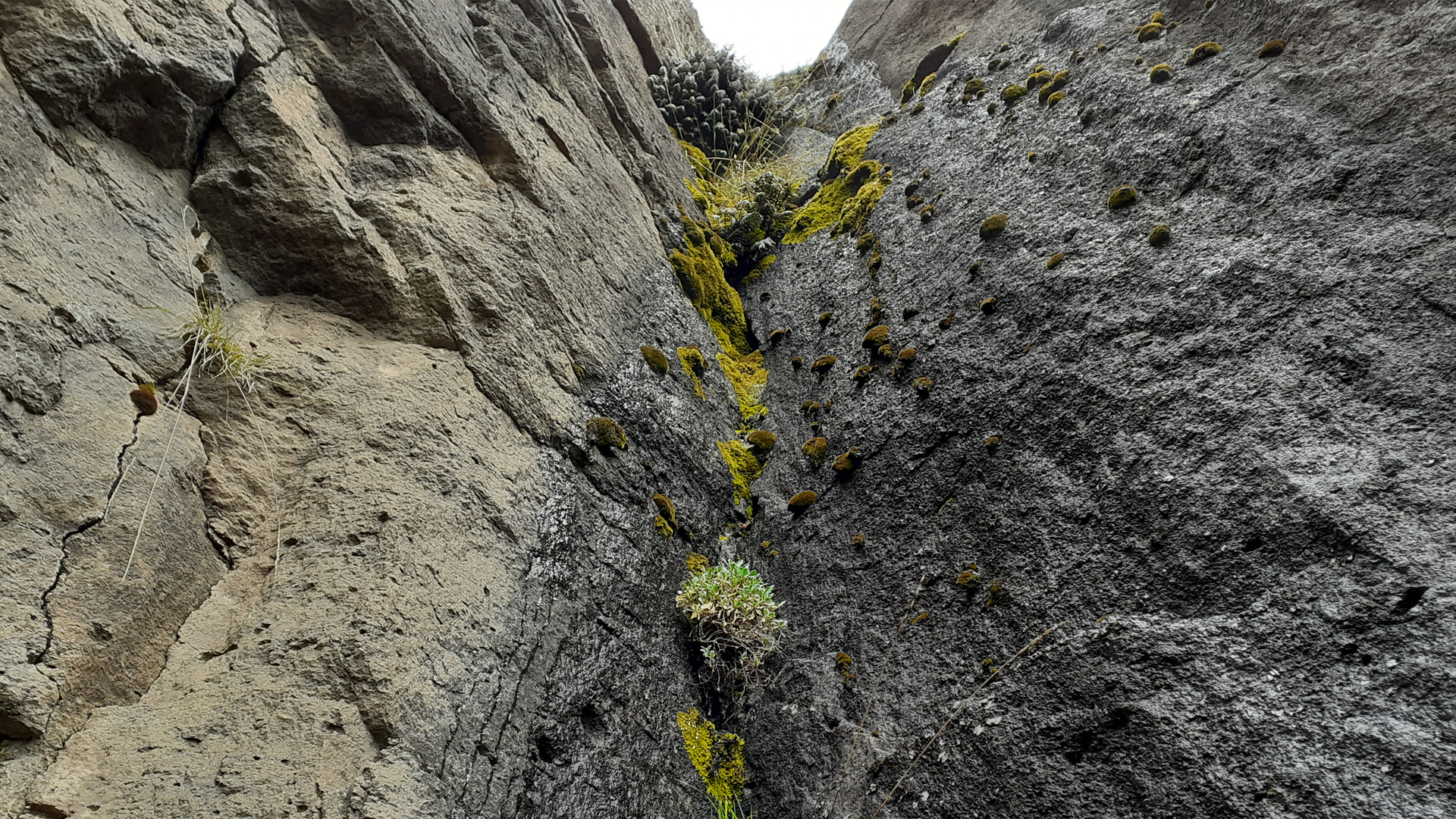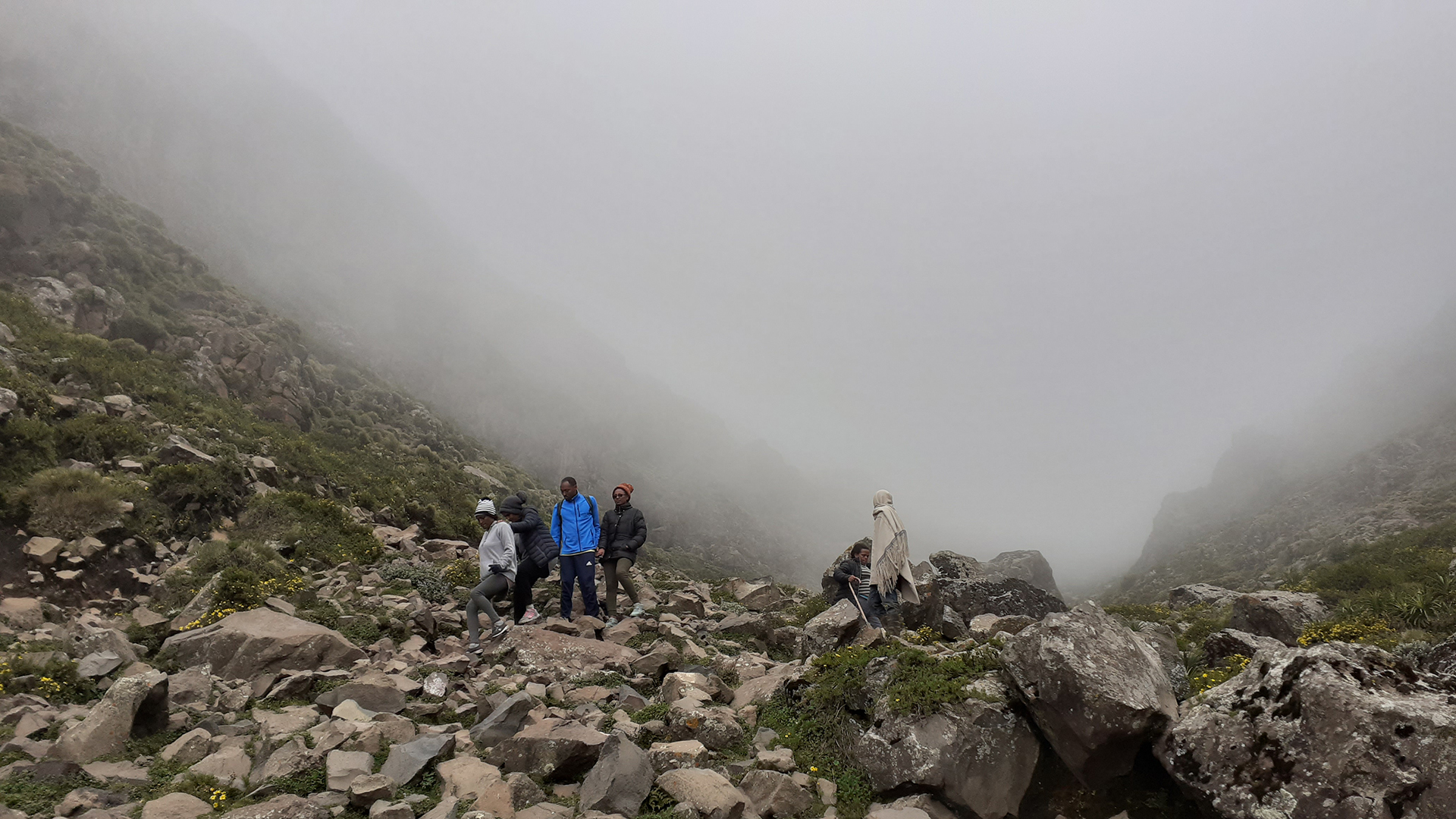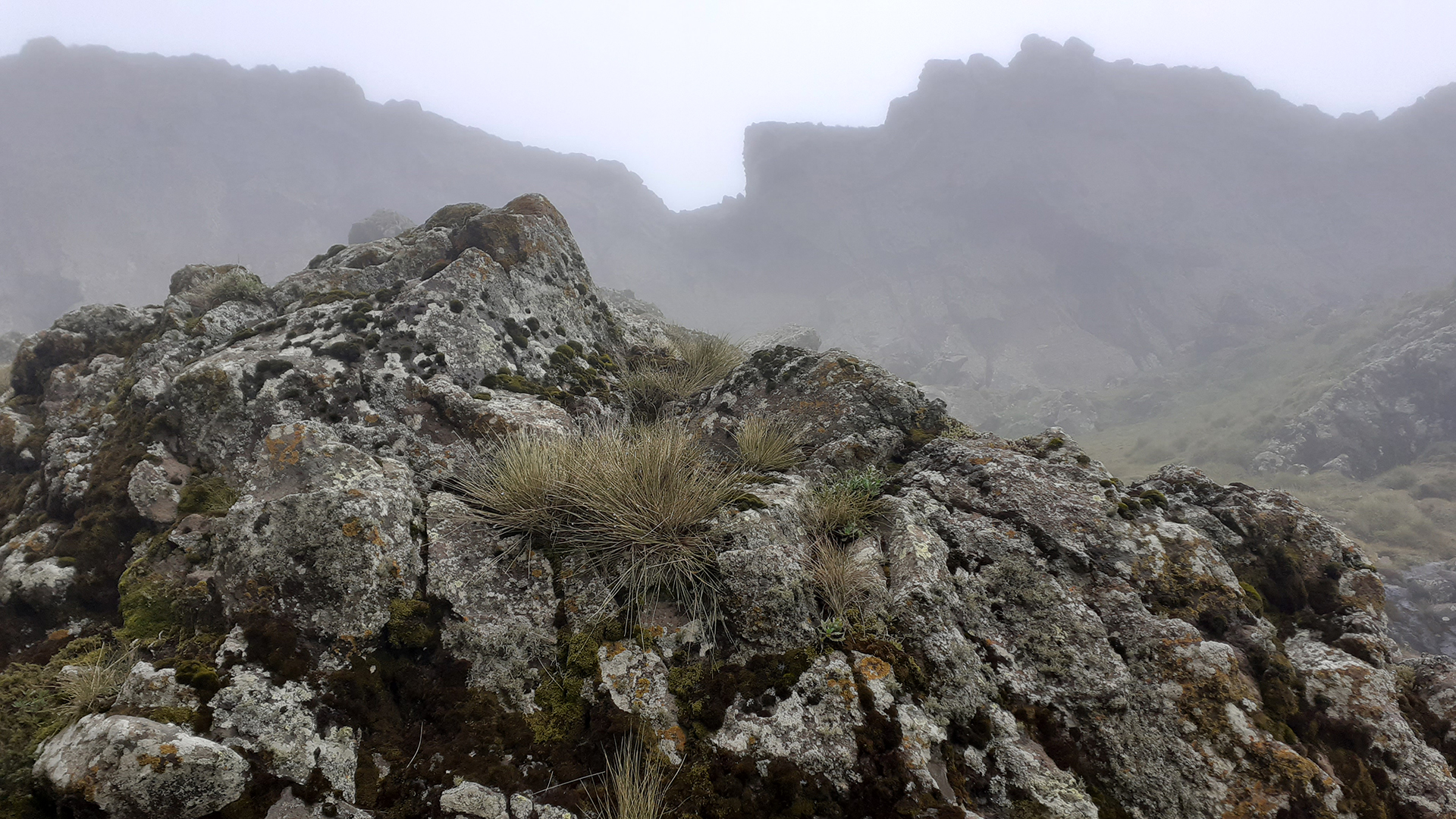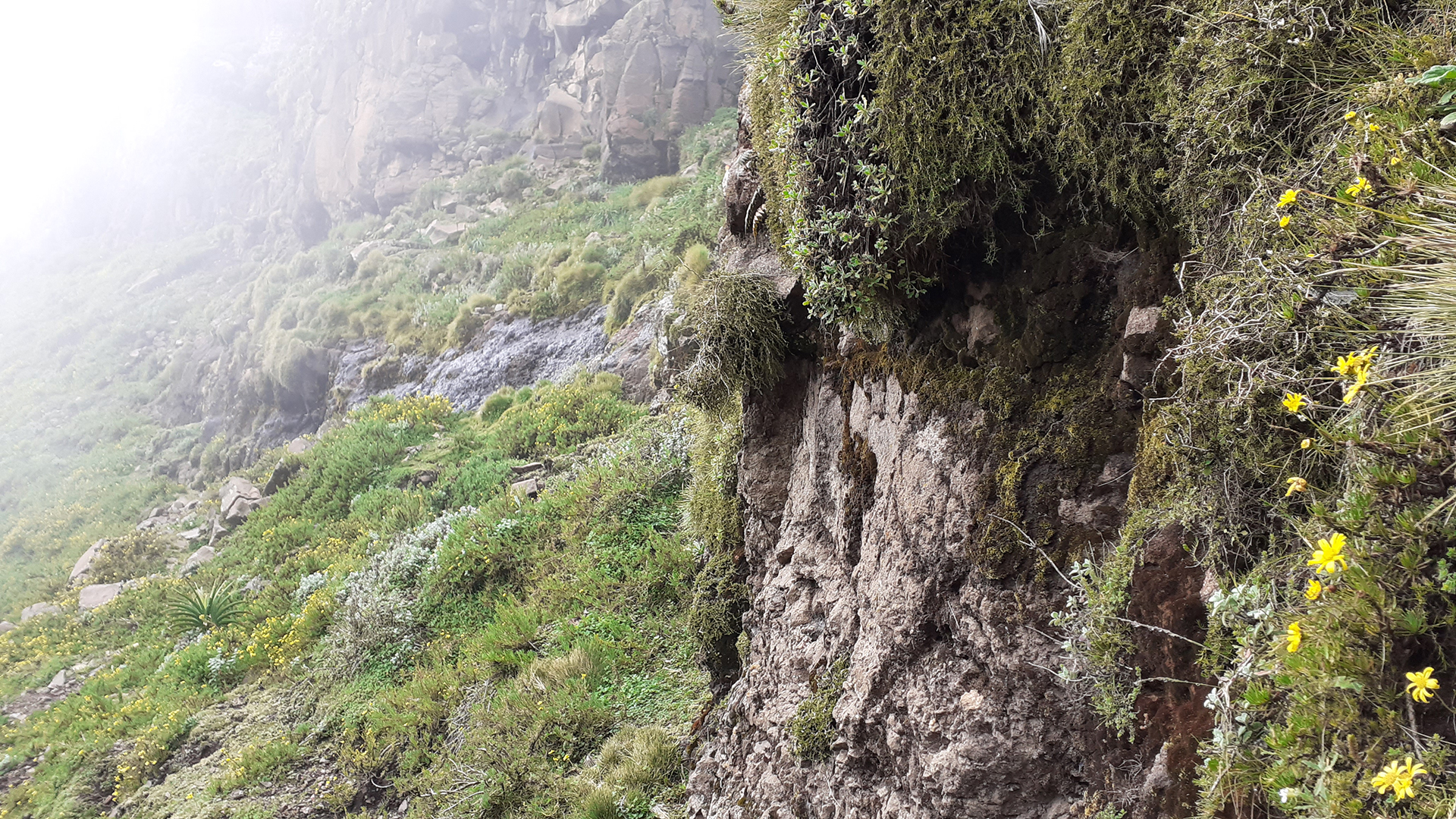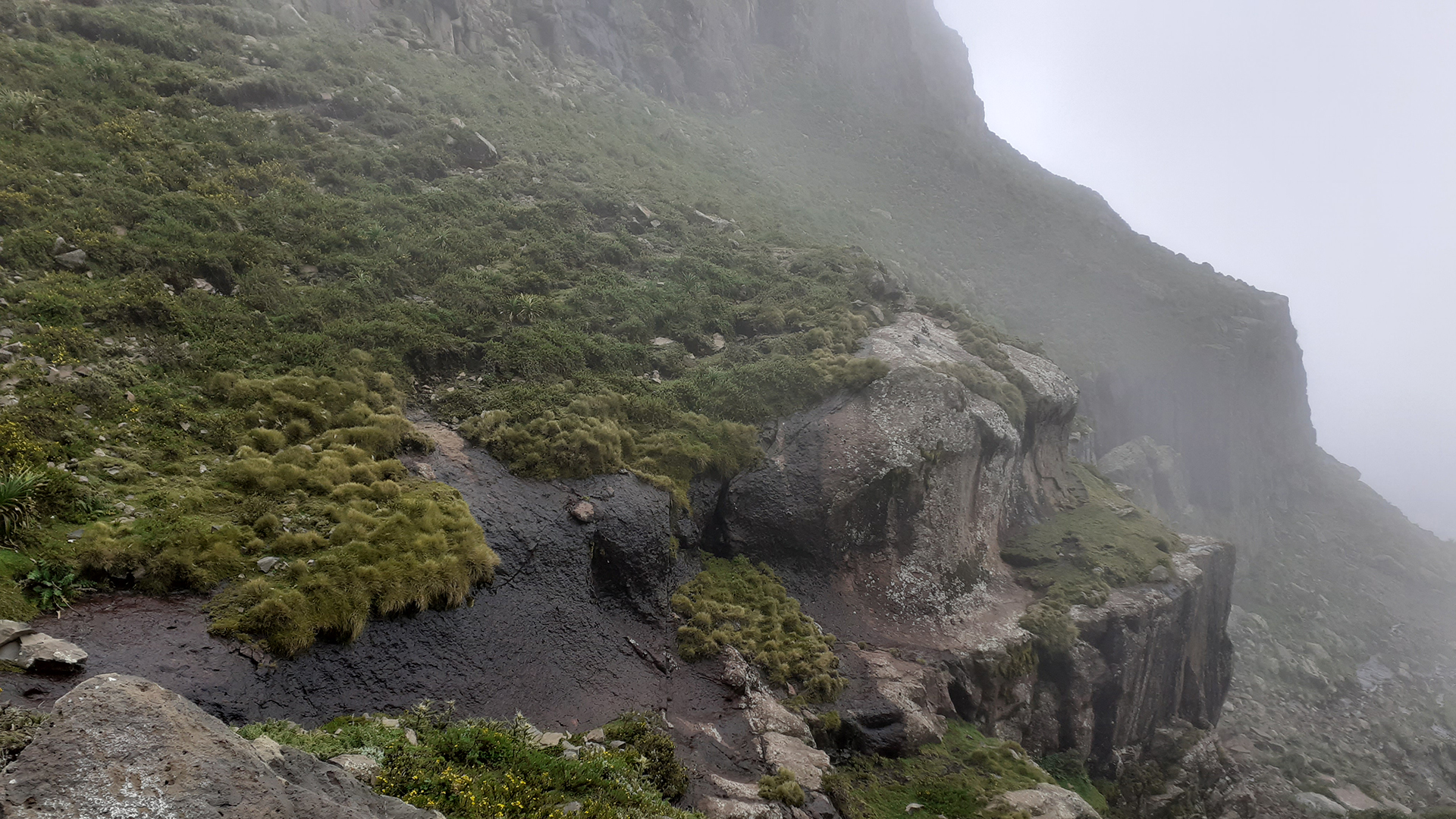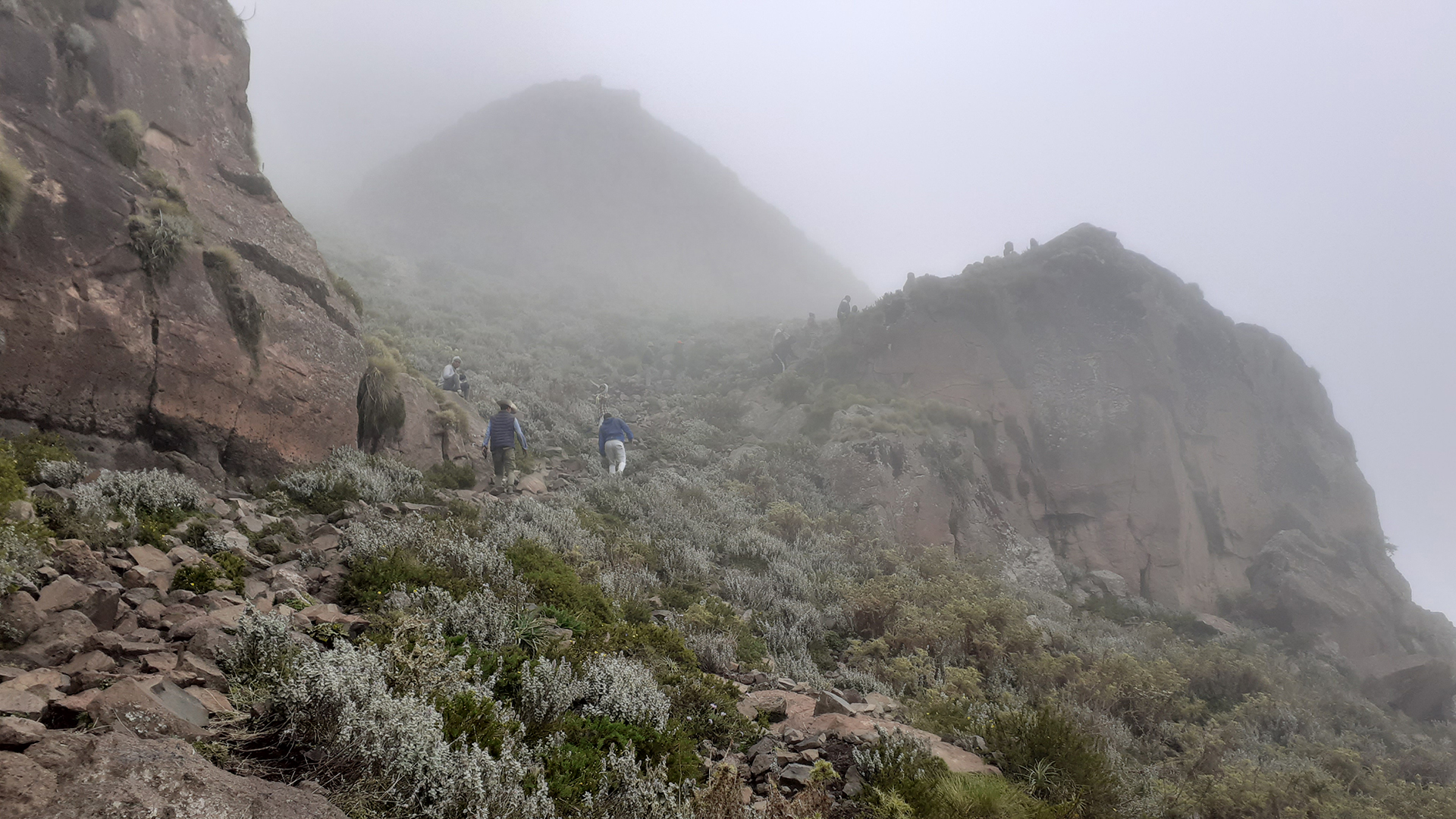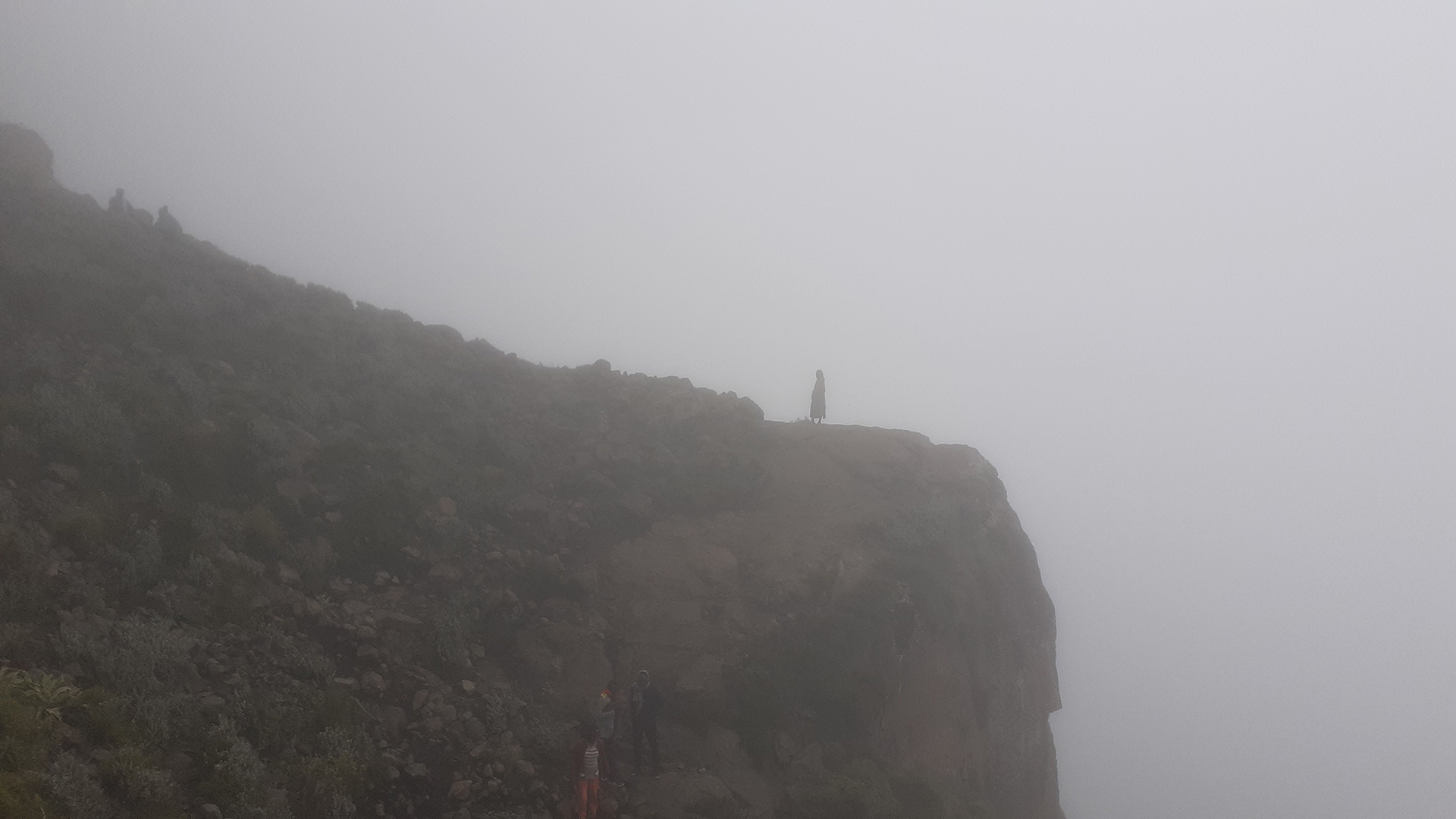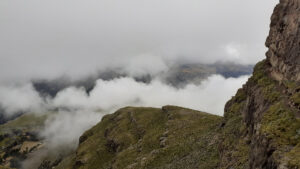Usually covered with fog and short highland grasses, at 3,949 meters above sea level, Mount Tsibet is the highest peak in Tigrai.
Hiking up Tsibet requires a full bar of patience and commitment. It tastes your physical and mental strength. Once you reached the top of the mountain, however, you’ll never feel the same. You will witness a different world.

It is impossible to describe the beauty of the mountain. Everything about it is simply awe-inspiring: the geological formation of the mountain itself; the unique multi-colored pebbles – yes, orange, black, white, and green stones! – that are scattered over the top plateau; the abundant, beautiful, and very aromatic flora that gives an other-worldly feel; the sound and sight of little streams flowing from the top to all sides of the mountain; and even the fog that gracefully flows from the bottom to the top, side to side and randomly across the mountainsides.

At the foothill of the mountain, the nature of flora is similar to the ones at Desa’a and Qoyetsa. Especially the big tree locally known as Tsihdi makes them more common. The vegetation at the top and mountainside is really different from other parts of Tigrai. There are no big tree, only grasses, flowers recessed on the ground floor, and thorny grasses.
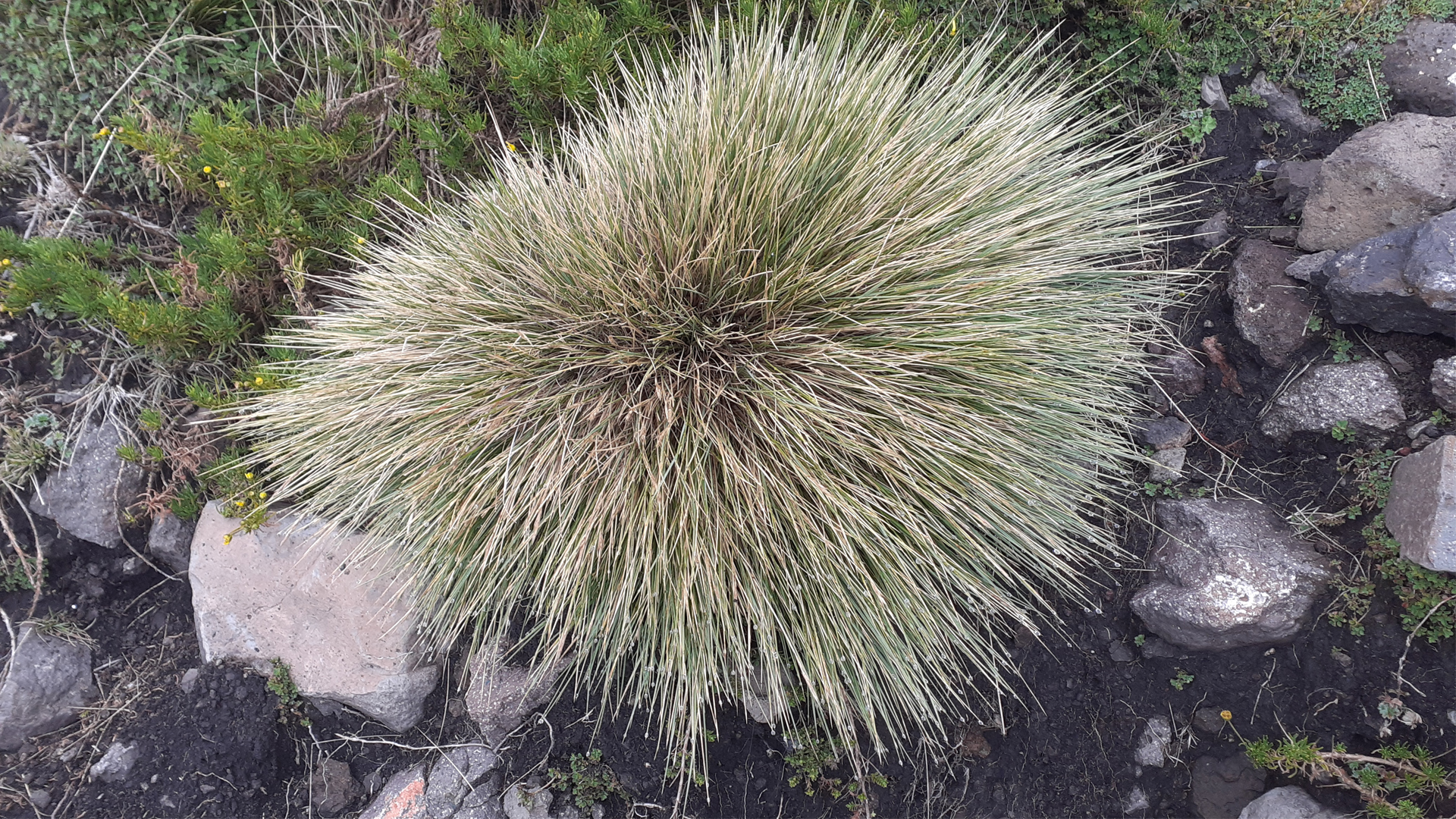
Everybody who has been to this mountain falls in love with the beauty of nature on the mountain and on the way up the mountain. Yet, love and beauty aren’t all Mt. Tsibet and its environs have to show off. Every rock along the way to the top speaks of age and wisdom; every flower that sticks its head out from a tiny crack on the rock prides in its resilience; every cave hints a mystery to be deciphered; every narrow path owns a story to be told.

The people who inhabit the sides of the mountain are equally beautiful and resilient. The woman in Bolango village is as resilient as the flower that sticks out from a crack but as generous as if she doesn’t have tomorrow. One sees this not only when one comes to face to face with her but also when one finds her children herding cattle or just walking. The cowboys there are so helpful.
The people who live in the foothill produce high-quality unique barley, locally known as Gunaza or Gunaja (ጉናዛ).

Not everything about the trip to Tsibet is heart-warming. The thought that a pregnant woman must walk or be carried, through the unforgiving path we traversed, in order to get medical access is painful. So is the general understanding that the guardians of such a bountiful gift as Mt. Tsibet live barely beyond absolute poverty; and that, in dealing with the unpredictable vagaries of nature, they are mostly abandoned to their fate. It’s so common that you find underage girls carrying fuelwood, fighting with the rough life in a matter of life and death to support their family.
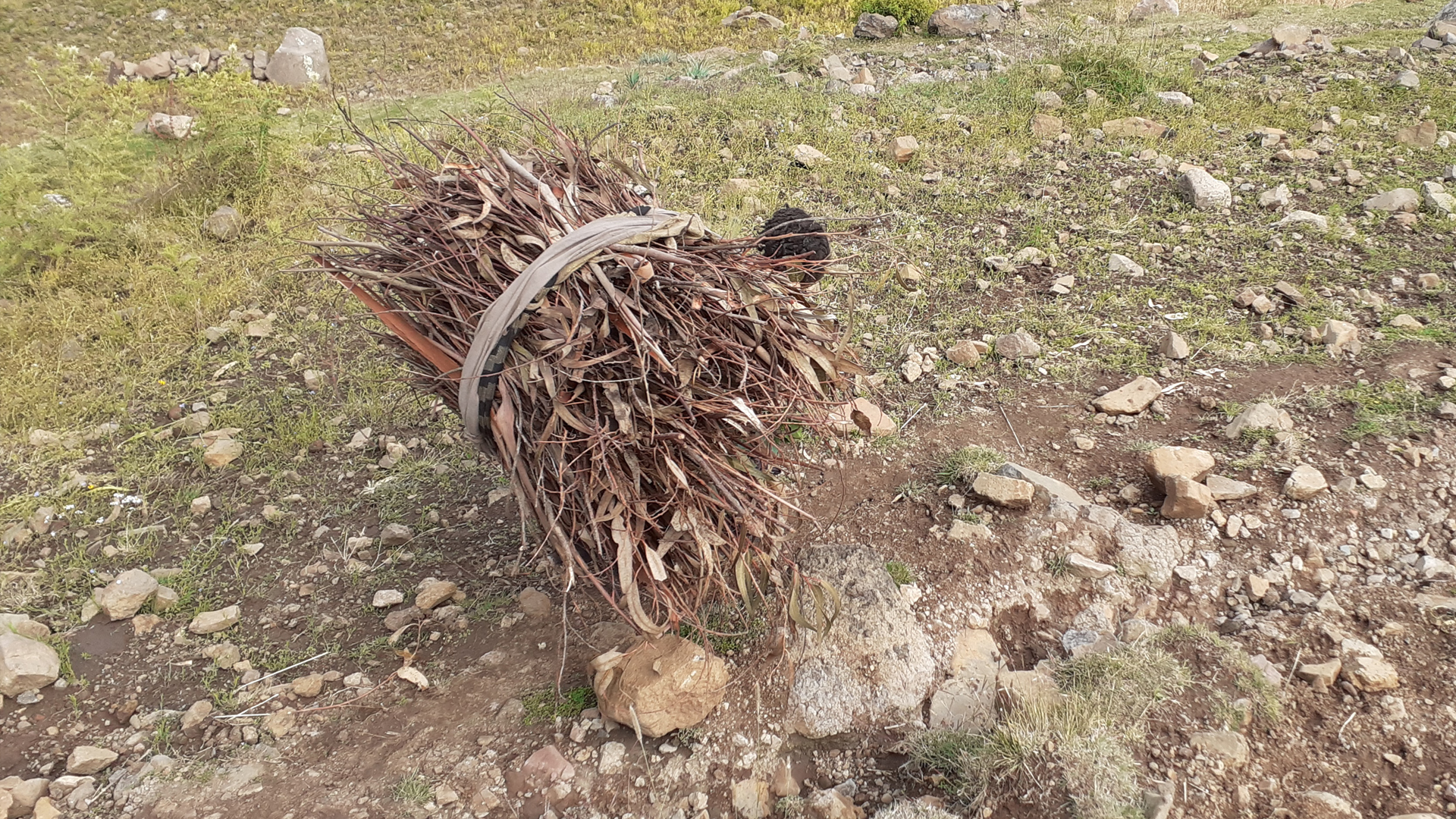
In the sea of beauty and grace of Mt. Tsibet, though, even this harsh realization fades away quickly.
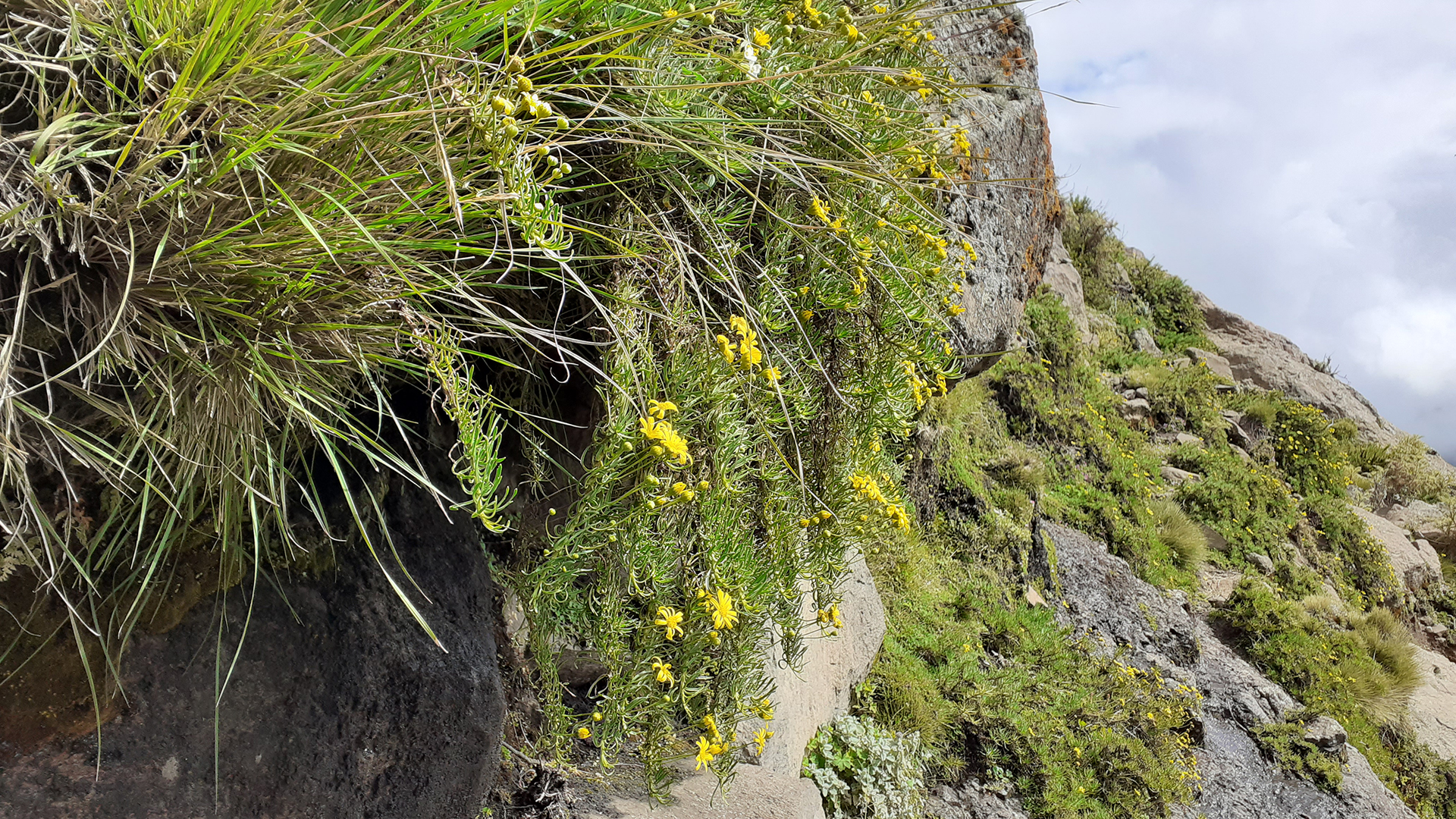
Tsibet is not protected.
#HadgiTourism strongly believes #Tsibet deserves to be a fully-fledged, protected park and forest reserve. We would like to call interested individuals and/or institutions to work together in realizing the mountain into a resourceful protected national park.
Note: The article here is compiled from the feelings of members of Tigrai Hiking Group, who hiked up the mountain on the 24th of November 2019.

